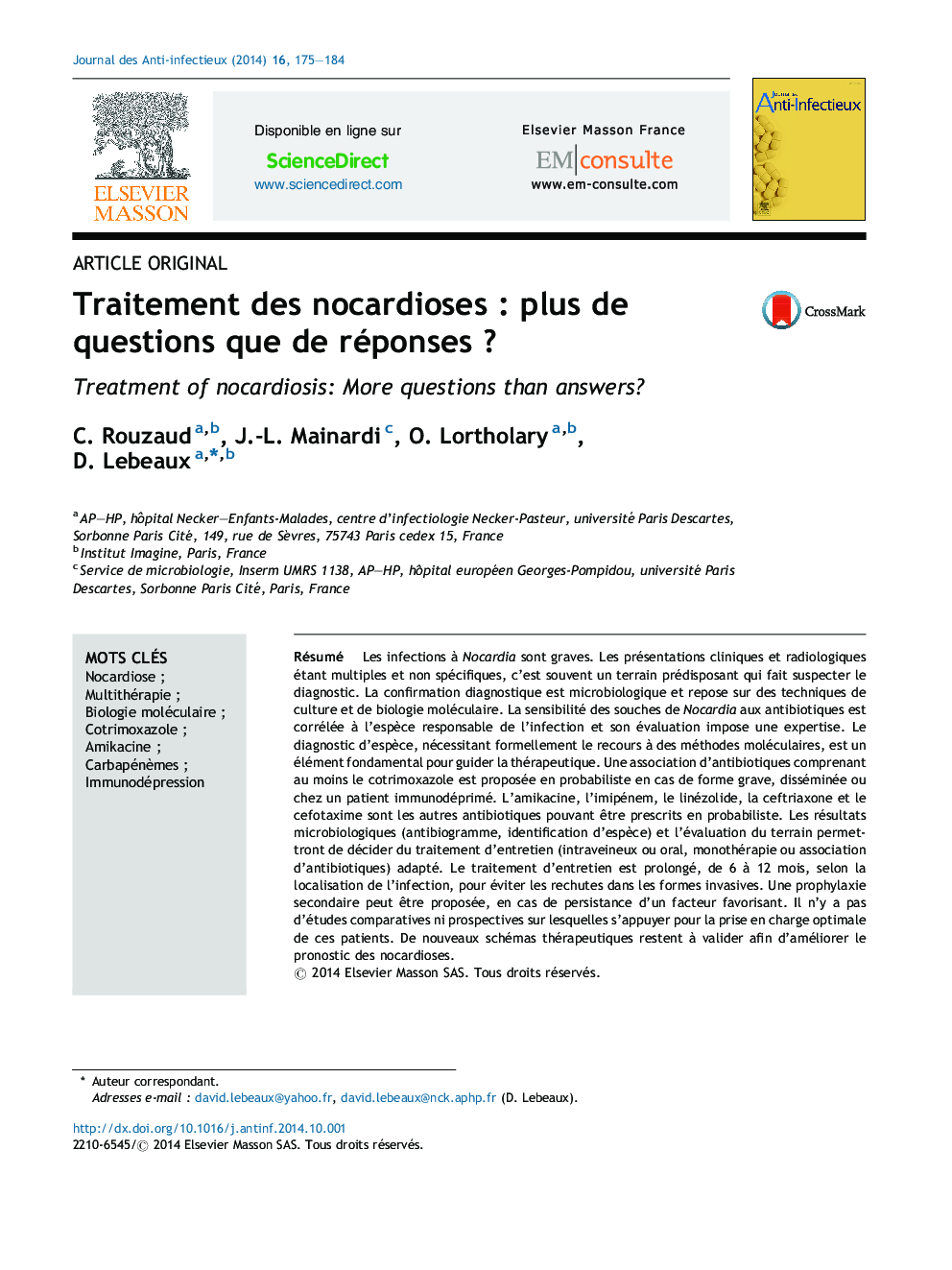| Article ID | Journal | Published Year | Pages | File Type |
|---|---|---|---|---|
| 3405402 | Journal des Anti-infectieux | 2014 | 10 Pages |
Abstract
Nocardiosis is a severe disease. As clinical and radiological features are diverse and not specific, it is usually an underlying condition that leads to the diagnosis, through microbiological cultures and specific molecular tools. Antibiotic susceptibility patterns vary among Nocardia species and its assessment requires an expertise. Species identification requires the use of molecular tools and is associated with antibiotic susceptibility patterns. Multiple-drug regimens including cotrimoxazole are proposed as empirical treatment for severe or disseminated infections, or for immunocompromised patients. Amikacin, imipenem, linezolid, ceftriaxone and cefotaxime can also be prescribed before obtaining antibiotic susceptibility testings. Microbiological results (susceptibility, species identification) and underlying condition assessment are mandatory to select the modality of the maintenance treatment (intravenous or oral, monotherapy or combination of antibiotics). According to the infection site, therapy is prolonged for 6 to 12 months to prevent relapse of invasive disease. Secondary prophylaxis can be prescribed in case of persistent underlying immunosuppression. Due to the lack of comparative or prospective studies, new therapeutic strategies still need to be studied in order to improve the prognosis of nocardiosis.
Keywords
Related Topics
Health Sciences
Medicine and Dentistry
Infectious Diseases
Authors
C. Rouzaud, J.-L. Mainardi, O. Lortholary, D. Lebeaux,
